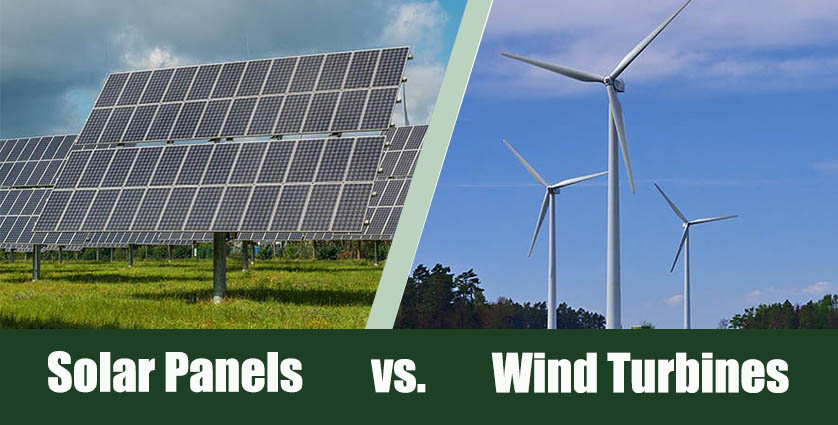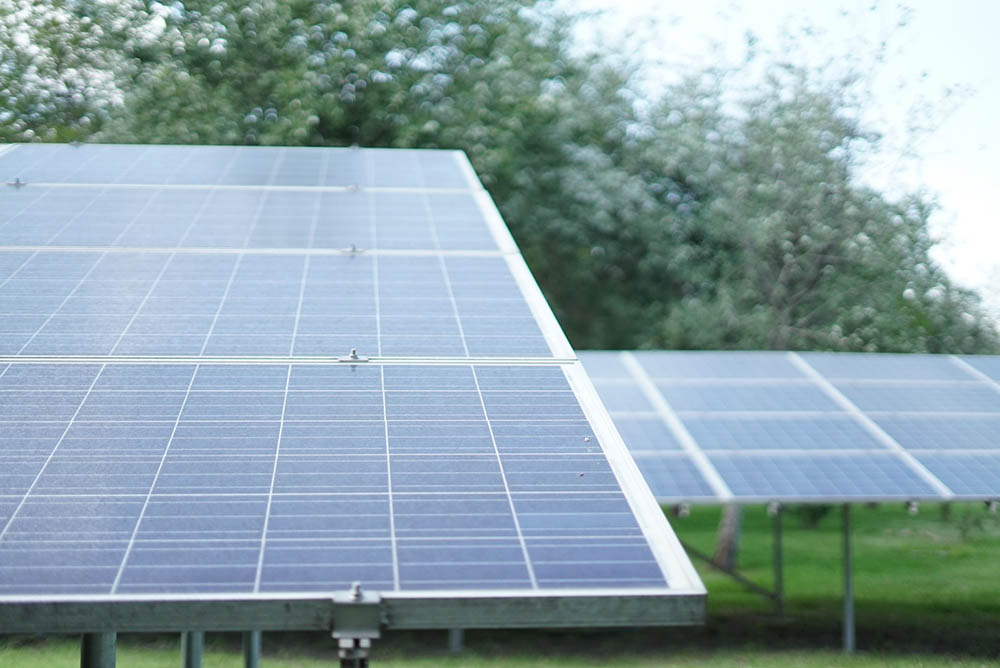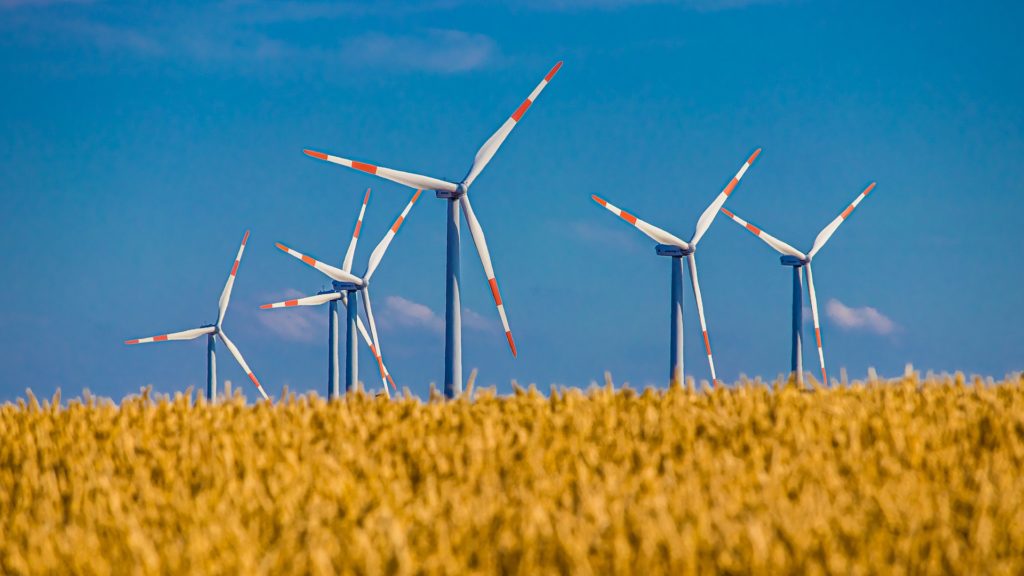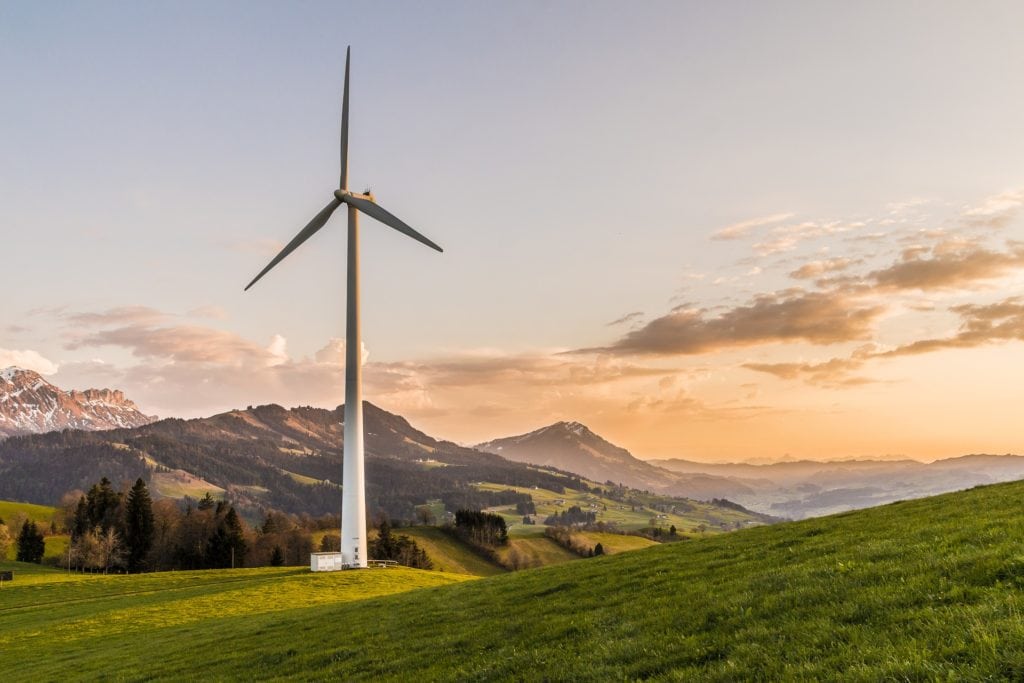Solar Panels vs. Wind Turbines: Which is Better? (2023 Update)
-
Kristin Hitchcock
- Last updated:

When it comes to choosing a source of renewable energy, it can be challenging to know which one is the best option. Of course, any source of renewable energy is better than using a consumable form. However, all of the different types are very different. Therefore, it is nearly impossible to know exactly which one you should select.
Today, many are interested in installing solar panels or wind turbines in their home. Out of these options, solar panels are the most widely used source for residential use. However, wind turbines are available in many places as well.
For help choosing between them, take a look at our complete guide below.

Overview of Solar Panels

Solar panels are often installed on roofs since it usually provides them unobstructed access to sunlight. However, they can also be installed on the ground in certain areas.
Wattage Production
Generally, home-installed solar panels can produce up to 370 watts per panel. However, it does depend on the size and efficiency. Usually, multiple solar panels will be installed to increase output. A solar panel that gets 5 hours of sunlight will produce around 1,450 watts per day.
Typically, these systems are between 15% and 20% efficient. However, the sun produces a lot of power, so they don’t need to be extremely efficient to produce a lot of power.
To fully power a house, you need about 20 functioning solar panels that are around the middle in size and efficiency. If your area is very good for solar energy, you may need fewer.
Cost
The average solar panel system costs $3 to $5 per watt. However, much of this cost is upfront. Therefore, you’ll likely be spending about $20,000 upfront for the system to be installed. Plus, this does not include a solar battery bank that is often utilized for night-time power.
However, these systems require practically no maintenance. They can save you a lot of money on energy over the years, so they can pay for themselves in about a decade or so. Solar panels often last a long time—up to 30 years if they are cared for properly.

Environmental Friendliness
Solar panels are not completely environmentally friendly, even if they are renewable sources of energy. They usually use non-renewable sources of energy to produce them, which means that greenhouse gases are often produced in their manufacturing.
Furthermore, making them also requires the use of some harsh chemicals, which can be damaging to the environment. When the panels break or get replaced, there is no easy way to get rid of them, either. They are a mixture of many different materials, so they are not very easy to recycle.
- Predictable energy output
- Can be installed on practically any building
- Require little maintenance
- Little space requirement
- No noise pollution
- Cannot produce power on cloudy days or at night
- Must be orientated correctly
- Upfront costs are expensive

Overview of Wind Turbines:

Wind turbines use the force of the wind to produce energy. Typically, they look a bit like a rotor and are attached to a tall surface, like a house. When the wind pushes the rotor, it creates kinetic energy for the generator, which produces electricity.
Wattage Production
The wattage production of these turbines varies widely. Generally, they are able to utilize 50% of the wind energy they come into contact with. While this is more efficient than solar panels, they are not constantly being turned by the wind. Therefore, that doesn’t necessarily mean that they produce more energy.
The typical wind turbine produces about 400 watts to 20 kilowatts of energy. Usually, this is enough for one turbine to power a single residential house. However, this is extremely environmental-dependent. On some days, turbines may produce nearly nothing.
Therefore, while these turbines are quite effective, they do not work everywhere. If it is not windy in your area, you may be unable to produce much energy at all.
Cost
The average cost for a turbine that will power the average home is about $41,500. However, this does not count the battery that many owners choose to purchase with the wind turbine. That works out to about $8,000 per kilowatt (upfront, at least).
That is much more expensive than most other systems, and it is likely why you don’t see many of these turbines in residential areas.
These turbines usually require more maintenance, as they are easily damaged. They can get struck by lightning and are more prone to wind damage. Therefore, they usually require at least a few visits by specialists in their lifespan, which can get expensive.
- See Also: 6 Wind Turbine Myths and Misconceptions

Environmental Friendliness
Creating a wind turbine produces very few emissions when being produced. They are one of the cleanest sources of energy for this reason. It does not take many fancy materials to make a wind turbine. Therefore, they can be made using environmentally friendly materials. They usually last about 20 years, so they do not need to be replaced often.
However, they can cause destruction to natural habitats—their spinning blades can hit birds, for instance. While this is more of a problem with large, commercial turbines, residential models can harm birds and bats as well.
- Produces electricity around the clock
- More efficient than most other options
- Very environmentally friendly
- Very expensive upfront
- Require more maintenance
- Can kill birds and other flying wildlife
- Noisy
- Not practical in all areas

Cost-Effectiveness
Generally, solar panels are cheaper than wind turbines. They are cheaper upfront and need less maintenance. Therefore, they seem to be the all-around cheaper option but it does depend on your local factors.
If your area is very cloudy, solar panels may not be effective enough. In these circumstances, your only choice may be to utilize wind turbines.
On the other hand, while wind turbines are almost always more expensive, they may be very effective in some areas. If you live in a very windy, flat area with few trees or houses to block the wind, then a wind turbine may make a lot of power. Plus, it can make power during the night as well, which can make it extremely effective.

Maintenance
Wind turbines have far more maintenance requirements than solar panels. Once you install solar panels, you don’t really need to do much else with them. Therefore, they are very inexpensive to upkeep. All you have to do is keep them cleaned off, as fallen leaves and debris will block the sunlight from reaching them.
However, wind turbines regularly get damaged. Sometimes, the wind speed can get too fast and damage the turbine. They can also be struck by lightning and damaged by debris. Therefore, they are extremely prone to be damaged. Most will need serviced multiple times in their lifetime.

Conclusion
The decision between solar panels and wind turbines is not always easy. In many cases, solar panels are the cheaper option. They are cheaper upfront, and they require less maintenance—in many cases, their upkeep is basically free.
However, wind turbines are much more expensive. They are also more prone to damage, which means that they regularly have to be repaired.
Solar panels provide more reliable energy since they make about the same every day. However, wind turbines can produce a lot of energy in the right area. When it comes to environmental friendliness, they are both about the same.
For the most part, the option you need to get depends on your area. Some areas are better with solar panels, while others are better with wind turbines. Generally, residents will want to invest in solar panels for the best return. However, if you’re in the Midwest, you may want to choose wind turbines instead.
See also:
Featured Image Credit: (L) mrganso, Pixabay | (R) AS_PHOTOGRAPHICS, Pixabay
Contents
